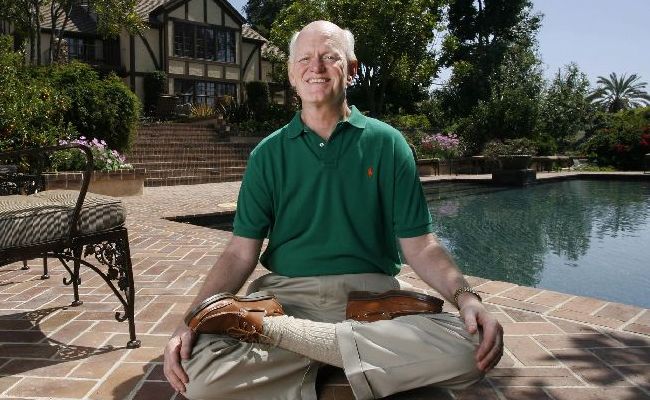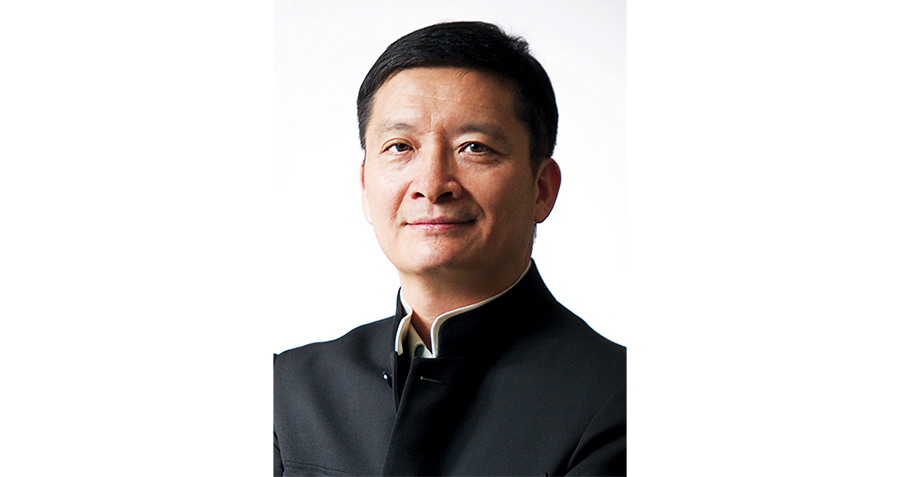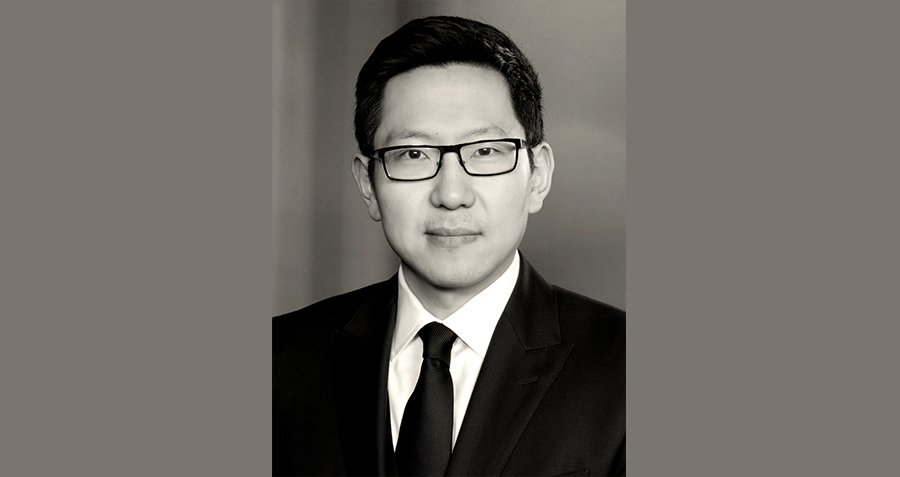Marshall Goldsmith’s brand of leadership appeals to everyone – from Fortune 500 CEOs to the lay man. What makes him so popular?
At first glance, Marshall Goldsmith, a bald, sprightly man with icy blue eyes, a fringe of white hair and ears that stick out, looks like a pixie. He darts around the room with the energy of a two-year-old. It’s fun to watch him walk – not an easy walk to imitate. When he teaches, he bounces from one end of the room to another, while his head stays stiffly in place and his arms straight. On most days, you’ll find him wearing a green Polo shirt and khaki pants, his trademark attire somewhat akin to Steve Jobs’ black turtleneck and blue jeans. His face breaks into an easy smile as he talks about his favorite subject, leadership and executive coaching. The words ‘no’, ‘but’ and ‘however’ do not exist in his vocabulary and if you make the grave mistake of mentioning any of these words in front of him, he’ll probably grab your hand mid-sentence and reprimand you for that.
When you meet him the first time, it’s hard to take him seriously-and easy to dismiss his teachings as cloying, and him as just another self-help guru. But when you look deeper, you’ll realize there is more to him than meets the eye. Goldsmith has the CEOs of many Fortune 500 companies eating out of his hands. People like Ford CEO Alan Mulally swear by him and pay through their nose to have some face time with him. He has worked as a consultant for companies like 3M, IBM, Philips and American Express. Over the years, Goldsmith, one of the world’s foremost executive coaches and a “philosophical and psychological Buddhist” by his own admission, has built a stellar reputation in the leadership firmament and rubs shoulders with the likes of superstar coaches like Ram Charan and Gary Ranker. He was ranked among the top five executive coaches according to Forbes magazine, and has consistently featured in the Thinkers 50, a ranking of business and management thought leaders.
At the heart of Goldsmith’s success is his approach to coaching, which focuses squarely on the individual and leveraging his or her own ability to bring about change. “The key variable for success in positive long-term change is not a coach or a teacher or a book, it’s the person, and that my job is to really help people figure out what they want to change and then help them learn from everyone around them in the process to find, to facilitate and enhance this change,” he says. “No one is better because they read a book or they have a coach or they go to a seminar. People get better because they work hard.”
It is this approach that has earned Goldsmith his stripes. Back in the day, when companies were still trying to get their arms around the idea of coaching, Goldsmith introduced the concept of 360-degree feedback in leadership development. He went a step further and introduced customized 360-degree feedback as opposed to generic feedback. The experiment worked. “Our feedback process impacted probably millions of people over the years. Then I started measuring ‘before’ and ‘after’ the studies and tried to figure out, what are the keys to people really achieving positive long-term change?” says Goldsmith. That led to Leadership is a Contact Sport, a seminal article he co-authored for Strategy+Business magazine in August 2004. The premise of the article was simple: leaders who routinely reached out to co-workers for feedback and development made more positive impact on their organizations and themselves. Contact is the key word. “(The article was) a study of 86,000 people and it shows that the key variable for success is the ongoing follow-up of the leader with the coworkers, not so much to speak for the coach or the teacher,” says Goldsmith. This article, which got on to the list of Strategy+Business‘ most popular articles, catapulted Goldsmith to superstardom.
By some quirk of fate, Goldsmith ended up working with the high priest of management, Peter Drucker-he was a board member of the Peter Drucker Foundation for close to 10 years starting in 1996. He had the privilege of working closely with Drucker before his death in 2005. “One of his great comments was that we spend a lot of time teaching leaders what to do, but we do not spend enough time teaching leaders what to stop (doing),” says Goldsmith. That comment struck a chord. And as he pondered over it, he was struck by the power of that seemingly simple statement. As people climb up the organizational hierarchy, they develop some competencies-and habits-that they probably need to get up there. But when they reach the top-and become leaders-these habits can become the proverbial millstones around their neck. Worse, they might be oblivious about it.
So what changes as you rise up the ranks? “At the lower level, it’s generally important to win, to prove you’re right, prove your expertise, and show how smart you are. When you become a CEO, your job is no longer to prove you are smart and win-it’s to make other people smart and help other people feel like winners,” says Goldsmith. As an example, he talks of Ford’s Mulally who says, “Every time I come to work, I tell myself leadership is not about me, leadership is about them.” That transition from a great achiever that is “all about me”, to a great leader that is “all about them” is very difficult. And some of the behaviors that were fine when it’s “all about me” do not work at all when it’s “all about them”.
As Goldsmith thought about it some more, he figured he had a few answers. The result was the What Got You Here Won’t Get You There: How Successful People Become Even More Successful, a book that refused to get off the bestseller charts for years after its publication in 2007. The book-part leadership, part self-help-identifies 20 habits that can cause successful leaders to fail and offers practical solutions to counter them. So what might these habits be? The 20 that Goldsmith points out include habits like ‘winning too much’, ‘adding too much value’, ‘not listening’, etc.
A lot of this is devastatingly simple, but some is a little counter-intuitive. For example, a lot of us are brought up with the notion that we must focus on the goal and aim to win. When-and why-did that become a bad thing? “The classic problem with successful leaders is winning too much-it’s hard to break the addiction to winning,” says Goldsmith. “When it’s important, we want to win. (When it is) meaningful, we want to win. When it’s trivial and when it is not worth it, we want to win. We have to teach leaders that you don’t always have to be right and win-let others win.” Goldsmith talks about a CEO who was obsessed with winning, so much so that his people stopped challenging him. But one day he was wrong on a decision, and no one pointed that out. The company lost 50% of its market capital in one day. “He was not a bad man-he was brilliant. He was almost right so much that he was intimidating and people wouldn’t challenge him even when they thought that he was wrong,” says Goldsmith. Similarly, being obsessed with the goal can blind us, and distract us from the actual mission.
Another bad habit he identifies is adding too much value. So if someone goes up to the leader with an idea and the leaders thinks that it is a great idea, his tendency would be to say that this is a nice idea, why don’t you add this to it? “The quality of ideas may go up by 5% but their commitment to execute the ideas may go down to 60%-It’s no longer their idea, but the leader’s idea. It’s very hard for people to stop constantly adding value,” says Goldsmith. Of course, there is a very fine line between ‘adding value’ and ‘adding too much value’ where it is not needed, and that is something a leader has to be extremely careful about. Goldsmith cites the example of a coaching client, Jean-Pierre Garnier, former CEO of GlaxoSmithKline. Garnier had a very interesting observation of his times as the CEO. He said, “My suggestion become orders. If they are smart, they are orders. If they are stupid, they are orders. If I want them to be orders, they are orders. If I do not want them to be orders, they are orders anyway.” Recognizing that this was a problem, Garnier decided to change his approach somewhat. As he told Goldsmith, “Before I speak, I stop and breathe and ask myself one question: is it worth it?”
If you look at all of Goldsmith’s work-whether it is through his coaching or his books including What Got You Here Won’t Get You There, Coaching for Leadership, and the curiously titled MOJO-it is all about helping successful leaders achieve positive long-term changes, for themselves, their people and their teams. Goldsmith’s next book, tentatively titled Ask What You Can Do, focuses on the radical idea of teaching employees how to engage themselves. “I now see that the key to employee engagement is not the company or a program or a book, it’s the person and (we can) teach the person how to manage and lead their own engagement,” he says. This book has some parallels with Buddhism, which Goldsmith adopted 30-odd years ago. “It’s a very Buddhist idea-if you want to find the major source of your misery or happiness, just look into the mirror,” he says.
Talking of Buddhism, Goldsmith’s thinking has been influenced a lot by the Buddha’s teachings, earning him the epithet of “The Buddha of the Boardroom” (from The New Yorker magazine). “My Buddhism is not a metaphysical or religious Buddhism, but a philosophical or psychological Buddhism. Buddhism really has a lot of influence in terms my work, my coaching and my teaching,” he says. Take for example, something Goldsmith calls “feedforward”. As opposed to feedback, which is focused on the past, feedforward is about getting inputs and suggestions for the future to help people get better. “In feedforward, you learn to ask for input, listen to the input, thank people (for it), and then use the input as a gift. Buddha said, ‘Only do what I teach if it works in the context of your own life. If it does not work for you, just don’t do it.’ To me that’s a great philosophy,” says Goldsmith.
Another very Buddhist idea is the belief that anyone can change. “Buddha did not believe that the necessity of a fixed identity over time. He believed that we can truly change. Well to me, I believe people can truly change,” he says.
Goldsmith warns against the great “Western disease” which is already razed countries like Singapore and Japan and is now sweeping across China and India. And pray, what is this disease? “I’ll be happy when I get the money and the status, the BMW, the condominium, when I build a big building, when I make a great achievement, when I make the next million dollars. Well, Buddhist philosophy says, ‘No, you won’t’. So in my school of Buddhism, I try to teach people of acceptance of what is,” says Goldsmith.
Goldsmith’s brand of leadership is simple and practical, and his solutions are commonsensical. It works for CEOs, and at some level, it works for everyday people in everyday jobs with everyday problems. And that is perhaps what makes him so popular.
About Marshall Goldsmith:
Marshall Goldsmith is a leading executive coach and the author or editor of 31 books on leadership including the bestselling What Got You Here Won’t Get You There; MOJO: How to Get It, How to Keep It, and How to Get It Back When You Lose It!; Succession: Are You Ready? and The Leader of the Future. In the bi-annual Thinkers 50 rankings, he was recognized as the Number 1 leadership thinker in the world and the Number 7 business thinker in the world. He has been recognized as a leading executive coach by various publications including the Economist, Wall Street Journal and Forbes.

















